


University of New South Wales, Australia

University of New South Wales, Australia
Scientia Professor Cyrille Boyer is Associate Dean (Research and Training) for the Faculty of Engineering and an Australian Laureate Fellow at the University of New South Wales, who is specialized in synthesizing functional macromolecules for applications in nanomedicine, advanced materials, and energy storage. He has pioneered photoinduced electron/energy transfer – reversible addition fragmentation chain transfer (PET-RAFT) polymerization (an efficient living radical polymerization which can be activated by light), synthetic bioactive macromolecules (such as antimicrobial polymers), and 3D printing methods for precise control over nano- and macro-structures. He has coauthored over 450 articles, which have generated over 44,500 citations, resulting in H-index of 118 (Google Scholar). Boyer's work has earned him over 30 prestigious awards including the 2016 ACS Macro Letters/Biomacromolecules/Macromolecules Young Investigator Award, 2018 IUPAC-Polymer International Young Researcher award, 2015 Lefevre Award from the Australian Academy of Science, and the 2015 Malcolm McIntosh Prize for Physical Science (one of the Prime Minister Prizes for Science). A Highly Cited Researcher every year since 2018, he has also been named among Australia’s top 250 researchers and recognised as a national leader in polymers and plastics by The Australian newspaper.
ENGINEERING NANOSTRUCTURED MATERIALS VIA 3D PRINTING WITH FULLY RECYCLABLE RESINS
Cyrille Boyera,*
aUniversity of Birmingham
Corresponding Author:cboyer@unsw.edu.au
Abstract
Currently, there are no straightforward methods to 3D print materials with nanoscale control over morphological and functional properties. In this talk, a novel approach for the fabrication of materials with controlled nanoscale morphologies using a rapid and commercially available Digital Light Processing 3D printing technique will be presented. The approach uses a controlled/living radical polymerization technique, more specifically, reversible addition-fragmentation chain-transfer (RAFT) polymerization, to control the topologies of the polymers.[1-2] In this talk, we report a rapid visible light mediated polymerization process and applied it to a 3D printing system.[3] Following the optimization of the resin formulation, a variety of 3D printing conditions will be presented to prepare functional materials.[4] The mechanical properties of these 3D printed materials were investigated under different conditions, showing that the control of the polymer structure can affect the performance of these materials.[5] Furthermore, the polymer networks were able to be reactivated after the initial 3D printing process, which allowed the post functionalization of the printed materials via secondary photopolymerization processes, enabling to introduce information.[6] Finally, by controlling the polymer architecture, we were able to precisely control the nanostructure of these 3D printed materials via a polymerization induced microphase separation.[7] The effect of nanostructure on 3D printed material properties will be discussed as well as their potential applications in drug delivery and energy storage, such as their use as solid polymer electrolytes for supercapacitor application. Finally, we will discuss a new approach for the recovery of resin after 3D printing enabling us to recycle these 3D printed materials.
Keywords: Photopolymerization, PET-RAFT, 3D printing
References
[1] A. Bagheri, C. M. Fellows, C. Boyer, Reversible Deactivation Radical Polymerization: From Polymer Network Synthesis to 3D Printing. Adv. Sci. 2021, 8 (5), 2003701.
[2] Z. Zhang, N. Corrigan, A. Bagheri, J. Jin, C. Boyer A Versatile 3D and 4D Printing System through Photocontrolled RAFT Polymerization. Angew. Chem. Inter. Ed. 2019, 58 (50), 17954-17963.
[3] Z. Zhang, N. Corrigan, C. Boyer A Photoinduced Dual-Wavelength Approach for 3D Printing and Self-Healing of Thermosetting Materials. Angew. Chem. Inter. Ed. 2022 134 (11), e202114111
[4]. X. Shi, J. Zhang, N. Corrigan, C. Boyer, Controlling mechanical properties of 3D printed polymer composites through photoinduced reversible addition–fragmentation chain transfer (RAFT) polymerization. Polym. Chem. 2022, 13 (1), 44-57.
[5]. K. Lee, N. Corrigan,C. Boyer, Rapid High-Resolution 3D Printing and Surface Functionalization via Type I Photoinitiated RAFT Polymerization. Angew. Chem. Inter. Ed. 2021, 60 (16), 8839-8850; V. Bobrin, K. Lee, J. Zhang, N. Corrigan, C. Boyer, Nanostructure Control in 3D Printed Materials. Adv. Mater. 2022, 34 (4), 2107643


Western University, Canada

Western University, Canada
SELF-IMMOLATIVE POLYMERS: CHEMISTRY AND APPLICATIONS OF STIMULI-RESPONSIVE DEPOLYMERIZATION
Elizabeth Gilliesa,*
aWestern University
Corresponding Author:egillie@uwo.ca
Abstract
Degradable polymers are of growing interest for many areas, including biomedical applications, smart materials and devices, and to address the challenges associated with plastics pollution. Significant progress has been made using backbones such as polysaccharides, polyesters, and a growing number of bio-based polymers. However, in some cases it is desirable to be able to control precisely when and where polymers degrade and to access their degradation under a diverse range of conditions. Self-immolative polymers are a growing class of degradable polymers that undergo controlled end-to-end depolymerization following a stimulus-mediated backbone or end-cap cleavage (Figure 1) (1, 2). This presentation will describe the development of self-immolative polymers based on cyclization-elimination mechanisms (3, 4) and those which depolymerize due to their low ceiling temperatures (5). Advantages and disadvantages of different backbones will be discussed. In addition, the potential application of these polymers in applications such as nanopatterning, hydrogels, and self-assemblies that can encapsulate and release nucleic acids will be presented.
Keywords: self-immolative, stimuli-responsive, degradable, hydrogel, self-assembly
 Figure 1. Overall design schematic for depolymerization of a self-immolative polymer.
Figure 1. Overall design schematic for depolymerization of a self-immolative polymer.
References
1. Gong, J.; Tavsanli, B.; Gillies, E. R. Annu. Rev. Mater. Res. 2024, 54, 47-73.
2. Deng, Z.; Gillies, E. R. JACS Au 2023, 3, 2436-2450.
3. DeWit, M. A.; Gillies, E. R. J. Am. Chem. Soc. 2009, 131, 18327–18334.
4. Deng, Z.; Gillies, E. R. Angew. Chem. Int. Ed. 2025, 137, e202420054.
5. Fan, B.; Trant, J. F.; Wong, A. D.; Gillies, E. R. J. Am. Chem. Soc. 2014, 136, 10116–10123.

Hokkaido University, Japan
Hokkaido University, Japan
Designing Functional Hydrogels via Bio-inspiration


Southwest University, China

Southwest University, China
Sustainable Polymeric Materials Design: Programming Function and End-of-Life Degradation

Pohang University of Science and Technology, South Korea
Pohang University of Science and Technology, South Korea
Moon Jeong Park earned her B.S and Ph.D. in Chemical Engineering from Seoul National University. She was a Postdoctoral Fellow at UC Berkeley. She joined the faculty of Chemistry at the Pohang University of Science and Technology in 2009 and became a Full Professor in 2018. Her research focuses on elucidating the interplay of morphology and transport in nanostructured charged polymer materials based on a fundamental understanding of molecular interactions. She serves as an Associate Editor for Macromolecules (ACS). Recent recognitions include the 2025 Science Prize of POSCO TJ Park Foundation of Korea, the 2024 Star (Science Technology and Researcher) Award of Ministry of Science of Korea, the 2021 American Physical Society DPOLY Fellow, 2017 American Physical Society Dillon Medal, and 2016 IUPAC Young Polymer Scientist Award, and 2016 Young Scientist Award of Ministry of Science of Korea. She was also selected as the 15th Female Scientist and Engineer of the Year Award of Korea.
END-GROUP CHEMISTRY: PATHWAYS TO NETWORK MORPHOLOGIES AND SUPERIONIC POLYMERS
Moon Jeong Parka,*
aPohang University of Science and Technology
Corresponding Author:moonpark@postech.ac.kr
Abstract
End-group functionalization has become a powerful and versatile strategy in polymer science, allowing precise tuning of intrinsic polymer properties, such as thermal transitions, solubility, and crystallization, without altering the polymer backbone. In our group’s work, we have shown that end-group interactions can direct polymer self-assembly, enabling the formation of thermodynamically stable, highly frustrated three-dimensional network structures. I propose revising traditional block copolymer phase diagrams to incorporate end–end interactions and end-group arrangements. When end-functionalized block copolymers exhibit strong end–end associations, network phases such as gyroid, diamond, and primitive can occupy a significantly expanded phase window, replacing the lamellar structures typically expected. This underscores the powerful role of end-group chemistry in shaping functional nanomaterials. This concept also provides a pathway for developing superionic polymers by strategically designing charged end groups that finely tune molecular interactions. Such interactions decouple ion relaxation from polymer relaxation, overcoming the trade-off between ionic conductivity and mechanical strength seen in many solid-state polymer electrolytes. These insights highlight the transformative potential of end-group chemistry for next-generation polymer materials and provide a foundation for designing functional nanomaterials for emerging applications, including solid-state battery electrolytes, mechanical metamaterials, and optical metamaterials.
Keywords: End-Group functionalization
References
1) Hojun Lee, Sangwoo Kwon, Jaemin Min, Seon-Mi Jin, Jun Ho Hwang, Eunji Lee, Won Bo Lee, and Moon Jeong Park*, “Thermodynamically Stable Plumber’s Nightmare Structures in Block Copolymers”, Science 2024, 383, 70.
2) Hojun Lee, Jihoon Kim, and Moon Jeong Park*, “Block Copolymer Electrolytes with Double Primitive Cubic Structures: Enhancing Solid-State Lithium Conduction via Lithium Salt Localization”, ACS Nano 2025, 19, 1251.
3) Xuelang Gao, Hojun Lee, Woongsik Choi, Yunsoo Shim, Hyung Min Chi, and Moon Jeong Park*, “Superionic Disulfonic Acid Polymers”, Adv. Funct. Mater. 2025, 2501998.

Kyoto University, Japan
Kyoto University, Japan
Library Precision Synthesis of Polymers from Rationally Designed Monomers

University of Birmingham, United Kingdom
University of Birmingham, United Kingdom
Precision Polymer Nanoparticles

Kindai University, Japan
Kindai University, Japan


Biruni University, Turkiye

Biruni University, Turkiye


Korea Advanced Institute of Science & Technology, South Korea

Korea Advanced Institute of Science & Technology, South Korea

Korea University, South Korea
Korea University, South Korea


Universiti Kebangsaan Malaysia, Malaysia

Universiti Kebangsaan Malaysia, Malaysia


Tokyo University, Japan

Tokyo University, Japan

University of Strathclyde, United Kingdom
University of Strathclyde, United Kingdom


Chulalongkorn University, Thailand

Chulalongkorn University, Thailand

Tsinghua University, China
Tsinghua University, China

Peking University, China
Peking University, China

Subscribe for